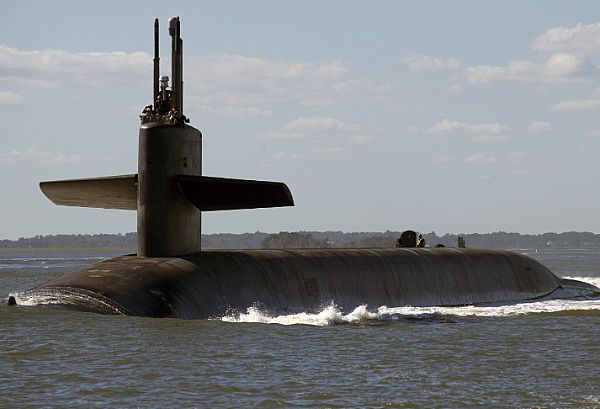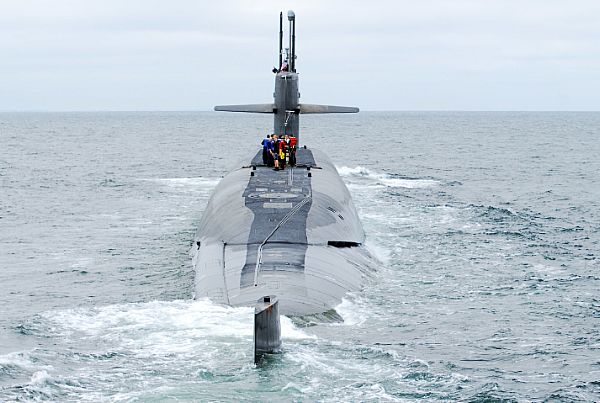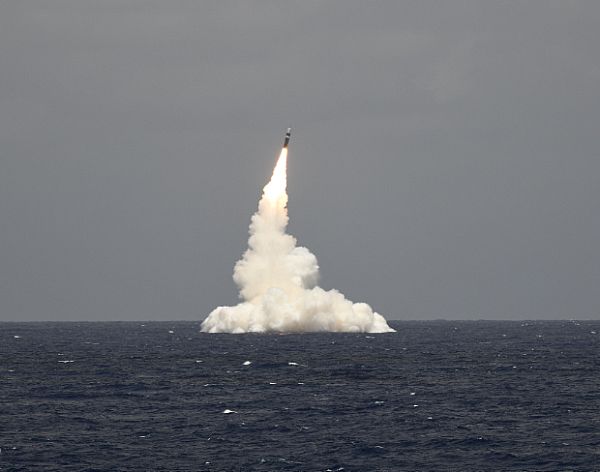
The U.S. has deployed a low-yield nuclear weapon on our Ohio-class submarines. The new warhead is categorized as the W76-2. Its estimated yield is usually described as 5 kilotons (kt). One report says it is in the range of 5 kt to 7 kt.
There have been a lot of articles on the W76-2 recently.
Federation of American Scientists – 1/29/20 – US Deploys New Low-Yield Nuclear Submarine Warhead – Report says the US Tennessee deployed in late December 2019 armed with 1 or 2 of its 20 Tridents carrying the new low-yield warhead. Estimated yield is 5 kilotons.
First of the W76-2s were built in January 2019. There are estimated 50 of the W76-2s in inventory.
Reason for the development and deployment of the W76-2 is explained in the February 2018 Nuclear Posture Review, which asserted Russia has plans for use of a low-yield tactical nuke in the event of a conventional war. US understanding of their plans are to threaten or actually use a low yield nuke to gain advantage or to protect a deteriorating situation during a conventional conflict. That would put the US in the position of having to escalate to strategic weapons or concede the fight. This is call either a “escalate-to-deescalate” or a “escalate-to-win” strategy.
Implied in this strategy is that advanced air defense technology would make it difficult or dangerous to use an airplane to deliver a tactical nuclear weapon in reply.
At different points, the FAS article calls this Russian plan “allegedly”, “supposed”, and for which there is “no firm evidence.”

My observations
Criticism is widespread of the new low-yield W76-2.
Comments tend to include variations of it will destabilize the power balance, or will lower the threshold for first-use (having around 1,000 tactical nukes in inventory has presumably not created that risk before), or will open door to uncontrolled escalation to strategic weapons (having tactical nukes in the inventory for, oh, the past several decades isn’t mentioned), or there isn’t ironclad public proof of the alleged new Russian strategy.
This follows a pattern I’ve noticed in my casual observations of defense issues over several decades: Every new U.S. weapon is a bad idea that will destabilize the world. The bad thing in any discussion tends to be the U.S. responding to a Soviet, then Russian move, not the previous action by the Russians to deploy something new or do something different.
Typical format of the argument is U.S. action destabilizes; the destabilization doesn’t seem to ever be attached to the action by the Russians which prompted the U.S. reaction.

A sampling of other coverage
Associated Press – 2/4/20 – US adds ‘low yield’ nuclear weapon to its submarine arsenal – Article refers to the Federation of American Scientists report.
Article cites the typical opposition that appears to any new weapon.
Popular Mechanics – 1/20/20 – A New and Controversial U.S. Nuclear Weapon Goes to Sea – Article repeats reports from Federation of American Scientists that the USS Tennessee deployed in December 2019 with 2 of the Trident II D-5 each carrying 1 of the W76-2.
Article explains the common understanding is the W76-2 has yield of 5 kt. That is in contrast to bomb used against Hiroshima rated at 16 kt. The usually armament for the Trident SLBMs is a mixture of W76-1 at 90 kt and W88 at 455 kt.
Recap of reported yields in open sources:
- 5 kt – W76-2
- 16 kt – Hiroshima
- 90 kt – W76-1
- 455 kt – W88
The Guardian – 1/28/19 – US nuclear weapons: first low-yield warheads roll off the production line / New type of weapon, ordered by Trump’s nuclear posture review, could make conflict more likely, say experts. Subheadline summarizes well the agenda of the full article.
Wide range of expected critics are cited to criticize the new weapon.